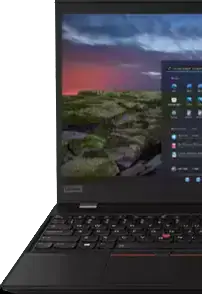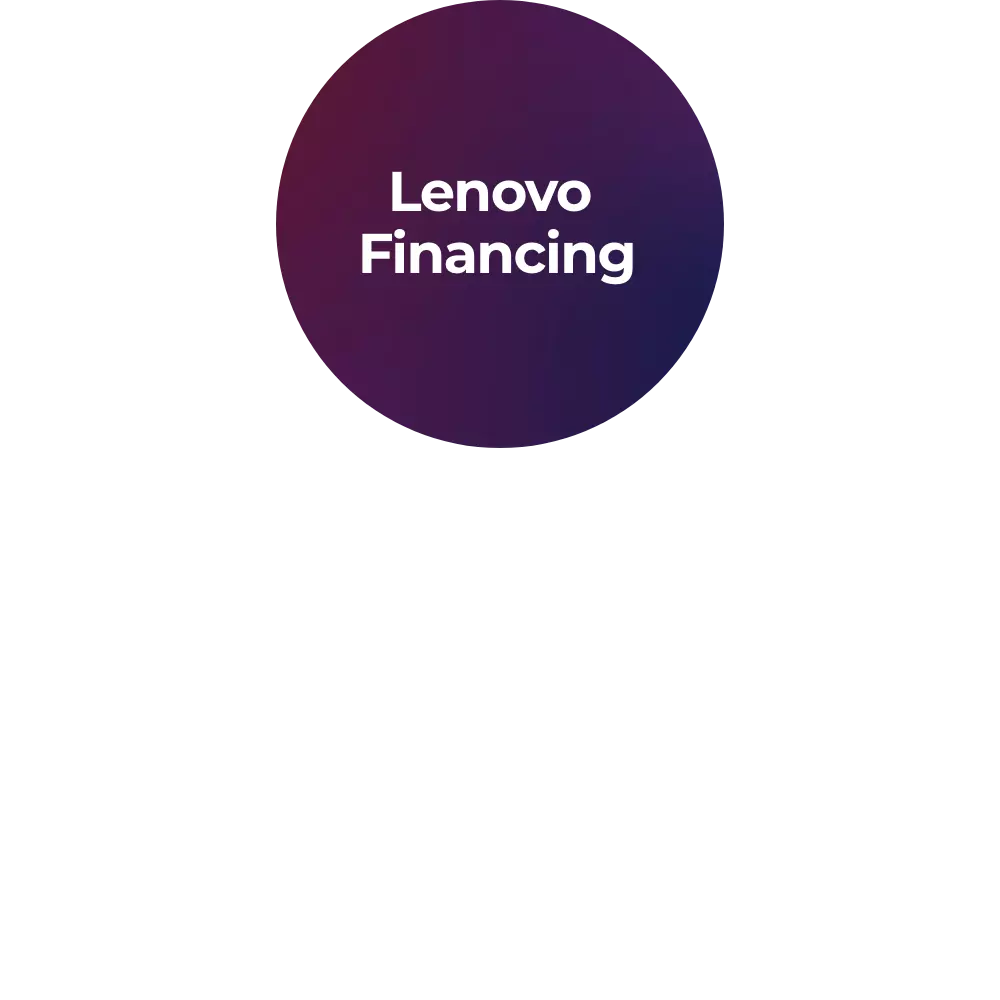What is a graphics card?
A graphics card, also known as a video card or graphics processing unit (GPU), is a hardware component responsible for rendering and displaying images, videos, and animations on your computer monitor. It accelerates the graphics processing capabilities of your computer, enabling you to enjoy smooth and high-quality visuals in games, videos, and other graphic-intensive applications. The graphics card works with the central processing unit (CPU) to process and output visual data.
For visual-intensive activities, such as complex graphic design, video editing special effects, animation, and PC gaming, a dedicated graphics card is essential. It not only processes graphics instructions efficiently but also accesses its own memory resources, ensuring that you achieve the performance you desire.
Moreover, a quality GPU enhances virtual reality experiences by making games feel more realistic. It reduces lag time and helps create a seamless 3D world, which is crucial for immersive environments. This means that with a high-performance graphics card, your virtual adventures become more engaging and lifelike, allowing for a truly captivating experience.
In essence, a dedicated graphics card is a vital component for anyone looking to maximize their computer's performance in both everyday tasks and demanding visual applications.
Why do I need a graphics card?
If you use your computer for tasks such as gaming, video editing, three-dimensional (3D) modeling, or other graphic-intensive activities, a dedicated graphics card is essential. It offloads the graphical processing from the central processing unit (CPU), resulting in improved performance and smoother visuals. Integrated graphics found in most CPUs are generally not as powerful as dedicated graphics cards, so if you want to experience the best visuals and performance, a graphics card is necessary.
What is the difference between integrated and dedicated graphics?
Integrated graphics are built into the central processing unit (CPU) and share system memory for graphical tasks. They are generally less powerful than dedicated graphics cards but are sufficient for basic tasks like web browsing, document editing, and media playback. Dedicated graphics, on the other hand, have their own dedicated memory and processing power, providing much higher performance for gaming, video editing, and other graphic-intensive tasks.
Can I use multiple graphics cards on my computer?
Yes, it is possible to use multiple graphics cards in a computer setup. This is known as scalable link interface (SLI) for NVIDIA® cards or Crossfire for advanced micro devices (AMD) cards. However, not all applications and games support multiple graphics cards, so it's important to research compatibility before investing in multiple graphics processing units (GPUs). Additionally, using multiple graphics cards requires a compatible motherboard and power supply with enough peripheral component interconnect express (PCIe) slots and power connectors.
How much video random access memory (VRAM) do I need?
The amount of VRAM you need depends on your specific requirements. For most gaming purposes, 4 gigabytes (GB) to 8GB of VRAM is sufficient for playing games at 1080p resolution. If you plan to play games at higher resolutions or use applications that require extensive graphics processing, such as 3D modelling or video editing, consider opting for a graphics card with 8GB or more of VRAM.
What is the difference between a reference card and a custom-designed graphics card?
A reference card, also known as a stock card, is a graphics card design directly released by the graphics processing unit (GPU) models, such as NVIDIA® or AMD. It features standard design, cooling solution, and specified clock speeds. On the other hand, custom-designed graphics cards modify the reference design to offer better cooling, higher clock speeds, and additional features like red, green blue (RGB) lighting or specialized cooling solutions.
What are the condition options for purchasing a graphics card?
When purchasing a graphics card, understanding the various condition options can significantly impact your buying decision. Here’s a breakdown of the typical conditions you might encounter:
- Brand New:These graphics cards come directly from the manufacturer, untouched and unused. They often include the full manufacturer’s warranty and all original packaging and accessories.
- Open Box:These items have been previously purchased and returned without being extensively used. They might come in their original packaging but could be missing some accessories. Open box items are typically inspected for quality and often come at a reduced price, making them a cost-effective choice.
- Refurbished:Refurbished graphics cards have been returned, repaired, and tested to meet original specifications. They can offer excellent value, combining lower prices with enhanced reliability and often including a limited warranty.
- Used:Purchased from previous owners, used graphics cards may vary widely in condition. The price is usually lower, but warranties or guarantees are typically not included, making it essential to deal with reputable sellers.
Understanding these options allows you to choose a graphics card that best fits your budget and needs while ensuring you get the best value for your purchase.
Does the size of a graphics card matter?
Yes, the size of a graphics card does matter, especially when it comes to fitting it into your computer case. Some high-end graphics cards can be quite large and may not fit in smaller cases. Before purchasing a graphics card, ensure that your case has enough clearance for the card's length, width, and height. Additionally, check if the peripheral component interconnect express (PCIe) slot is positioned correctly on your motherboard to accommodate the card's size.
Can I upgrade my graphics card in a pre-built computer?
In most cases, you can upgrade the graphics card in a pre-built computer if your power supply has enough wattage, and the motherboard has an available peripheral component interconnect express (PCIe) slot. However, there are some limitations to consider. Pre-built computers often have limited space for larger graphics cards, and sometimes the power supply may not have the necessary connectors or wattage to support high-end graphics processing units (GPUs). It's essential to check the specifications and compatibility of your specific pre-built system before making any upgrades.
Key Considerations for Installing a New Graphics Card
- Space and Fit:Assess the available space in your computer case. GPUs can vary significantly in size, so ensure that the card you choose will fit comfortably. Additionally, consider the GPU slot size on the motherboard to prevent blocking other components.
- Power Supply Requirements:Pair your new graphics card with a power supply unit (PSU) that meets its power needs. Check if your PSU has the necessary connectors and sufficient wattage to support the GPU's demands.
- Compatibility with Existing Hardware:Consider the performance of your new GPU in conjunction with your current setup. Match the card's capabilities to your monitor's resolution and refresh rate. For example, a 4K monitor or a high refresh rate display necessitates a robust GPU to deliver smooth visuals.
- Enhancing Gaming Experience:A quality GPU reduces lag and enhances virtual reality experiences, creating more immersive and seamless 3D worlds.
- Desktop vs. Laptop Upgrades:While upgrading a GPU in a desktop is relatively straightforward, doing so in a laptop can be much more challenging. If you're purchasing a gaming laptop, prioritize getting the best graphics card available, as future upgrades may be limited.
By considering these factors, you can ensure a successful upgrade that maximizes your gaming and computing experience.
What is the difference between a mid-range and high-end graphics card?
Mid-range graphics cards offer good performance for their price and can handle most games and applications at 1080p resolution. High-end graphics cards, on the other hand, provide superior performance and can handle demanding tasks like gaming at higher resolutions (1440 pixels (p), 4 kilo (K)), virtual reality, or professional applications that require extensive graphics processing power.
How do I determine the power requirements for a graphics card?
Graphics cards have specific power requirements listed in their specifications. To determine if your power supply is sufficient, check its wattage rating. Ensure that it meets or exceeds the recommended power requirements of the graphics card. It's also important to consider the number of peripheral component interconnect express (PCIe) power connectors your power supply has and whether it can provide enough power through those connectors.
What role does video random access memory (VRAM) play in graphics card performance?
VRAM is dedicated memory on the graphics card used to store and quickly access textures, shaders, and other graphical data. More VRAM allows for smoother rendering of high-resolution textures and complex scenes. However, having excessive VRAM beyond what is needed for your intended usage does not necessarily result in better performance. It's important to consider your specific needs when choosing the amount of VRAM.
Are there any specific considerations for gaming laptops when choosing a graphics card?
Yes, when choosing a graphics card for a gaming laptop, you need to consider factors such as power efficiency, thermal management, and form factor. Gaming laptops typically have smaller form factors and limited cooling capabilities compared to desktop personal computers (PCs). It's essential to choose a graphics card that fits within the power and thermal constraints of the laptop while still providing the desired level of gaming performance.
Key Considerations for Desktops vs. Laptops
When it comes to desktops, the process is more straightforward, but there are still important factors to consider:
- Space Availability:Ensure the GPU fits the space available in your computer case. This includes checking the GPU slot size to understand how much space on the motherboard may be occupied by the new GPU.
- Power Supply Compatibility:Pair your chosen graphics card with a power supply that meets its power requirements. This ensures stability and optimal performance.
For gaming laptops, upgrading a GPU is significantly more challenging. Therefore, it's crucial to select the best possible graphics card at the time of purchase. Consider the laptop's limited cooling capabilities and the need for power-efficient components that won't compromise performance.
By carefully considering these factors, you can ensure that your gaming setup, whether a desktop or laptop, is optimized for the best performance and longevity.
What role does the graphics processing unit (GPU) architecture play in graphics card performance?
The GPU architecture plays a significant role in determining the performance of a graphics card. Newer architectures often introduce improvements in efficiency, instruction sets, and technologies that enhance graphical processing capabilities. These advancements can result in better performance, higher frame rates, improved power efficiency, and support for features like ray tracing or deep learning super sampling (DLSS). It is worth considering the GPU architecture when choosing a graphics card, as newer architectures tend to offer better performance and futureproofing.
What factors should be considered when choosing the best graphics card for specific activities?
To find the best graphics card for your chosen activity, consider the memory capacity you need for your activities as well as the clock speed. Clock speed indicates the speed of the GPU’s cores. Measured in megahertz (MHz), clock speed is a good indicator of how quickly your graphics card will render the visuals you need.
Memory capacity is also crucial, especially for activities like gaming or video editing, where large amounts of data need to be processed quickly. More memory allows for smoother performance and the ability to handle more complex tasks.
When selecting a graphics card, balance these technical specifications with compatibility and architecture considerations to ensure the best fit for your needs.
What are the different GPU slot sizes available?
When choosing a GPU for your build, it's essential to understand the various slot sizes available, as they determine how much space a GPU will take up in your case. Let's explore the different sizes:
- 2-Slot:This is the standard size and typically occupies two PCIe slots on the motherboard. It's common in many builds due to its balance of performance and space efficiency.
- 2.5-slot:Slightly larger than the standard, this size offers better cooling solutions without taking up much more space.
- 2.7-slot:This falls between the 2.5-slot and 3-slot, offering enhanced cooling performance for more demanding GPUs.
- 2.75-slot:A variation that provides an ideal balance for cooling and space, ensuring optimal airflow.
- 3-Slot:These typically deliver higher performance and advanced cooling, which are beneficial for gaming or high-performance tasks.
- 3.5-slot:Designed for high-end GPUs, these require ample space but ensure powerful performance and efficient cooling.
- 3.75-slot:Even larger, this slot size demands a spacious case, allowing for excellent thermal management, crucial for top-tier gaming setups.
- 4-Slot:The largest option, these GPUs require cases with sufficient room. They are perfect for builds that focus on maximizing performance through superior cooling and space utilization.
Understanding these sizes will help you select the right GPU that fits your case and meets your performance needs. Always ensure you have the necessary room to accommodate your chosen GPU size to avoid compatibility issues.
What role does the graphics processing unit (GPU) architecture play in graphics card performance?
The GPU architecture plays a significant role in determining the performance of a graphics card. Newer architectures often introduce improvements in efficiency, instruction sets, and technologies that enhance graphical processing capabilities. These advancements can result in better performance, higher frame rates, improved power efficiency, and support for features like ray tracing or deep learning super sampling (DLSS). It is worth considering the GPU architecture when choosing a graphics card, as newer architectures tend to offer better performance and futureproofing.
Which chipset manufacturers produce GPUs?
When it comes to the production of GPUs, several prominent chipset manufacturers lead the charge. These companies are renowned for their cutting-edge technology and innovation in the graphics processing sphere.
Major GPU Manufacturers:
- NVIDIA®:
- Known for its high-performance graphics cards.
- Popular in gaming, professional visualization, and AI applications.
- AMD:
- Offers competitive graphics solutions.
- Utilized across gaming, content creation, and data centers.
- Intel:
- Newer to the discrete GPU market but with a strong focus on integrated graphics.
- Aims to expand its presence with upcoming technologies.
These companies are at the forefront of GPU development, pushing the boundaries of what's possible in visual computing and beyond.
What HDMI options are available on graphics card?
When selecting a graphics card, it's crucial to understand the HDMI options available, as they play a significant role in connectivity and performance.
Various HDMI Ports:
- HDMI 2.1 Ports:These are the latest in HDMI technology, offering support for higher resolutions and refresh rates, such as 4K at 120Hz. They are perfect for gamers and professionals seeking top-tier visual quality. Many graphics cards boast multiple HDMI 2.1 ports, allowing for versatile multi-monitor setups.
- HDMI 2.0 Ports:Although older, HDMI 2.0 ports are still widely used and reliable. They support 4K at 60Hz, making them a solid choice for most home entertainment and gaming needs.
- Standard HDMI Ports:Some graphics cards come with standard HDMI ports without specifying the version. These typically ensure compatibility with a range of monitors but may not support the latest features like higher refresh rates.
Benefits of Multiple HDMI Ports:
- Enhanced Connectivity:With multiple HDMI ports, you can connect several monitors or devices simultaneously, enhancing your productivity and entertainment experience.
- Flexibility:Having a mix of different HDMI versions ensures compatibility with a variety of devices, whether you're upgrading your monitor or using legacy equipment.
Ultimately, the choice of HDMI ports on a graphics card should align with your specific needs, whether it's cutting-edge gaming, professional work, or simple connectivity solutions.














